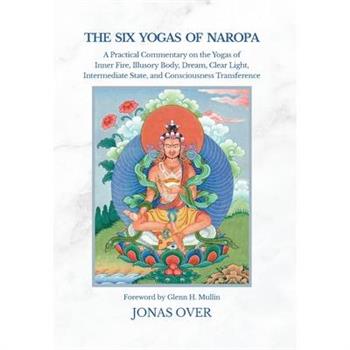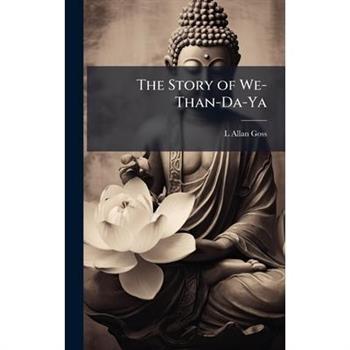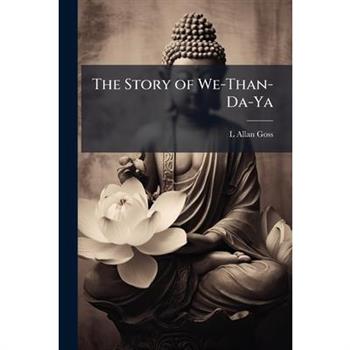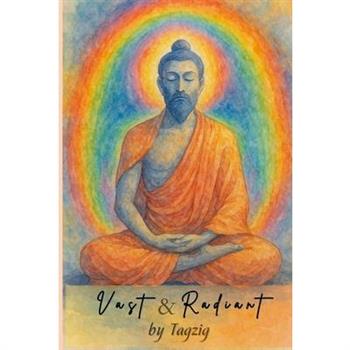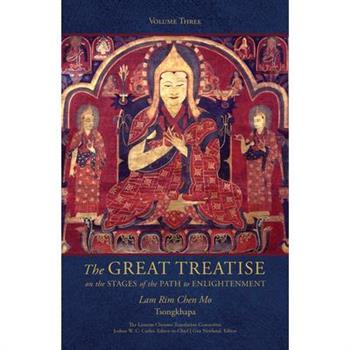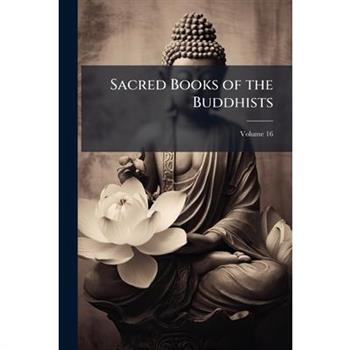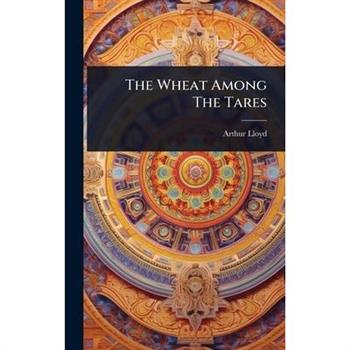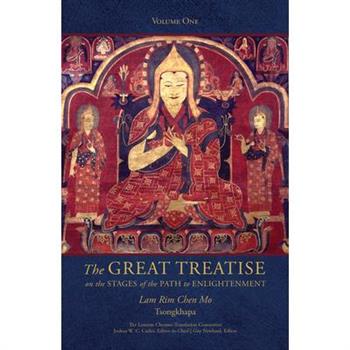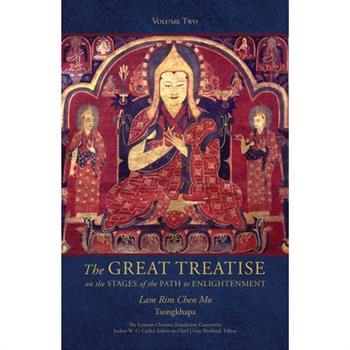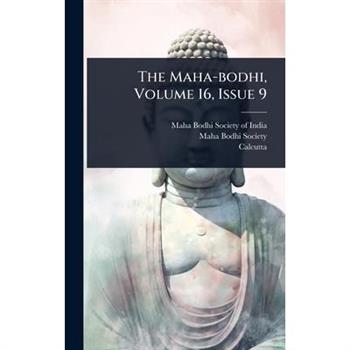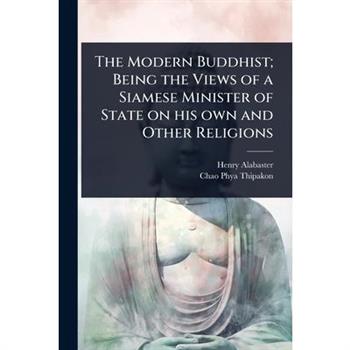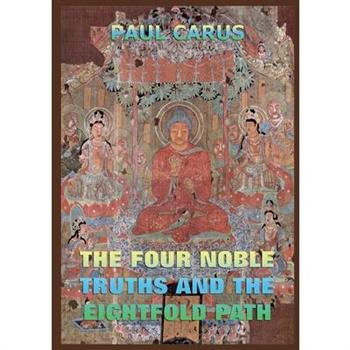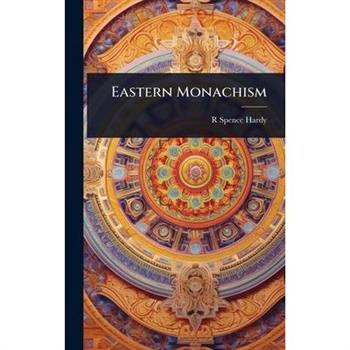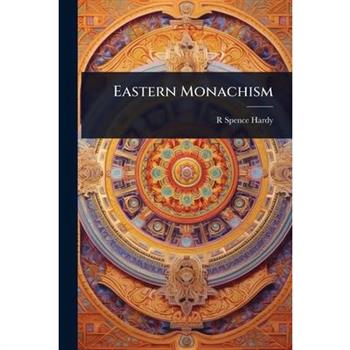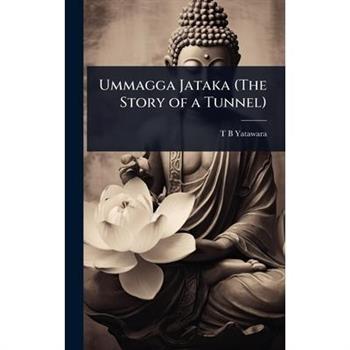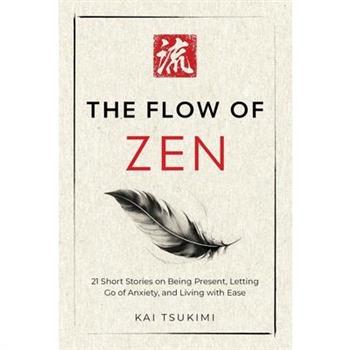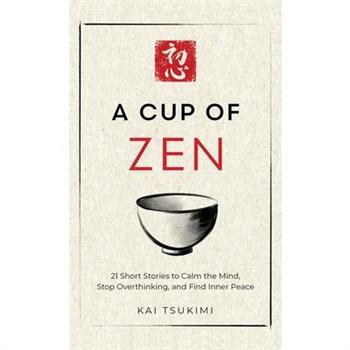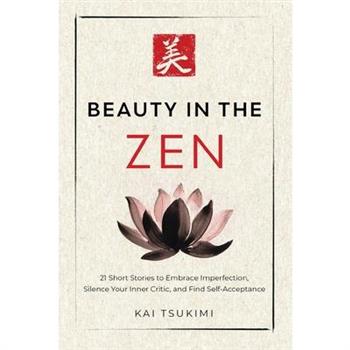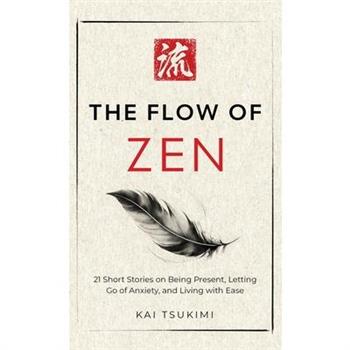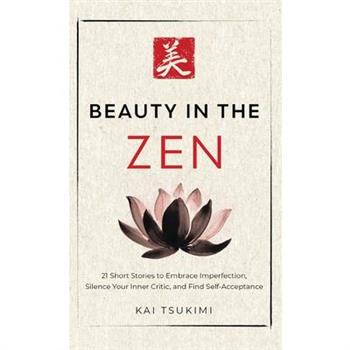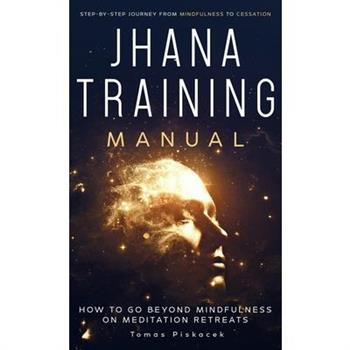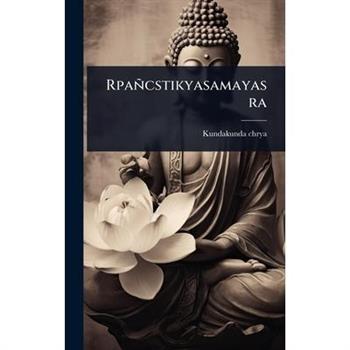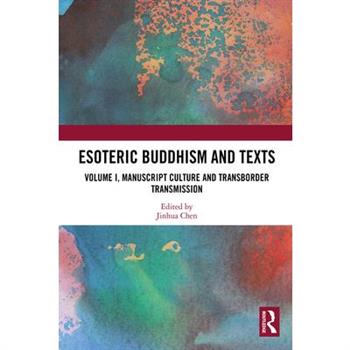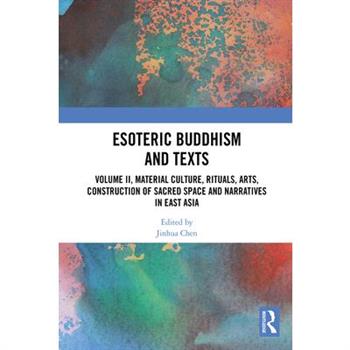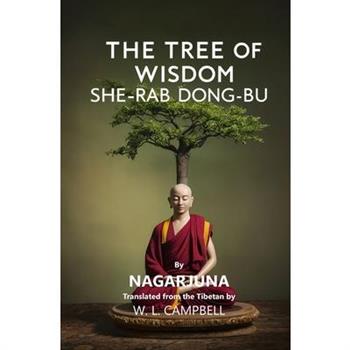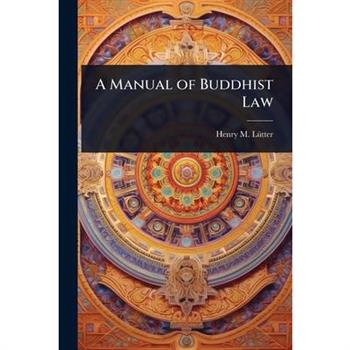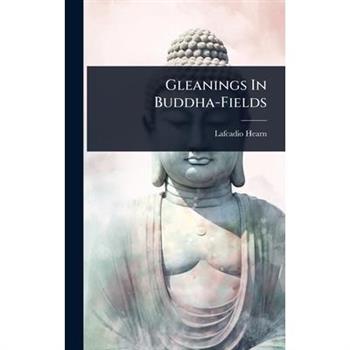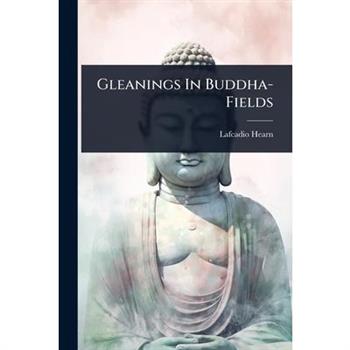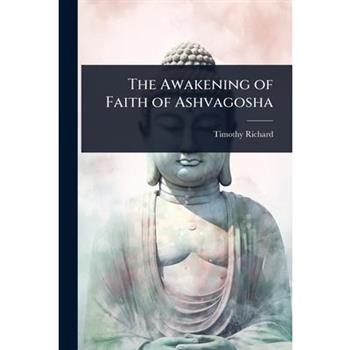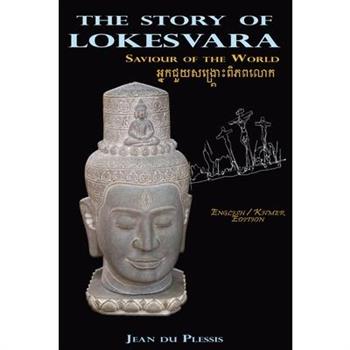The Six Yogas of Naropa
The Six Yogas of Naropa are celebrated as a system that can lead to full enlightenment within one lifetime, and countless Indian and Tibetan masters have accomplished enlightenment through these practices. Most of the historical commentaries are quite skeletal, and often were regarded as outlines for Lamas who give these teachings, rather than as commentaries for practitioners engaging in this training. This book is different. While still following the original and authentic teachings of this practice lineage, it gives more detailed explanations and guidance than earlier commentaries on the subject, which previously could only be received through oral instructions. Alongside an in-depth commentary on the Six Yogas of Naropa, it covers the preliminary practices, and features extensive practice manuals.
The Metaphysics of Meditation
In this book Stephen Phillips focuses on one of the most important poems about meditation in world literature, as understood by two of the greatest philosophers of India, one classical, one modern. Sankara's commentaries on the Upanisads are a core of the Vedanta tradition and Aurobindo is a towering figure of 20th-century Hindu thought. This is the first time their approaches have been studied together. The Isa (c. 500 BCE) an "Upanisad" belongs to a genre of "adhyatmika" learning-concerning self and consciousness-in early Indian literature. According to the Ancient Indian tradition of yoga, meditation is antithetical to willful bodily and mental action. Breathing is all you do. In the conception of the Isa Upanisad, we are told that the best that comes from meditation is because of what the "Lord" is. In Sankara's interpretation it comes to block out the little "you," whereas according to Aurobindo it comes as a divine connection, an occult "Conscious Force" belonging to truer part of oneself, atman, and an "opening" to that self's native energy. Framed around Aurobindo's translation of each of the Isa's eighteen verses, along with a translation of each verse, Phillips follows a different reading of Sankara as laid out in his commentary. All this is done against the backdrop of modern scholarship. Convergences and divergences of these streams are the focus throughout. Appendix A presents the Upanisad with the two readings side by side. This book traces a worldview and consonant yoga teaching common to two authors who are typically taken to be oceans apart, not only chronologically but in intellectual stance. Addressing a huge gap in the contemporary literature on meditation in the Hindu traditions, Phillips presents a compelling new way of thinking about meditation in the Advaita Vedanta philosophy and Upanisad.
The Six Yogas of Naropa
The Six Yogas of Naropa are celebrated as a system that can lead to full enlightenment within one lifetime, and countless Indian and Tibetan masters have accomplished enlightenment through these practices. Most of the historical commentaries are quite skeletal, and often were regarded as outlines for Lamas who give these teachings, rather than as commentaries for practitioners engaging in this training. This book is different. While still following the original and authentic teachings of this practice lineage, it gives more detailed explanations and guidance than earlier commentaries on the subject, which previously could only be received through oral instructions. Alongside an in-depth commentary on the Six Yogas of Naropa, it covers the preliminary practices, and features extensive practice manuals.
The Modern Buddhist; Being the Views of a Siamese Minister of State on his own and Other Religions
璽€œThe Modern Buddhist璽€ offers a fascinating glimpse into the religious and philosophical perspectives of a 19th-century Siamese Minister of State, Chao Phya Thipakon, as interpreted and presented by Henry Alabaster. This work provides a unique comparative analysis of Buddhism in relation to other religions, reflecting the intellectual curiosity and spiritual inquiry of the era. Through Alabaster璽€(TM)s lens, Thipakon璽€(TM)s views on Buddhism are articulated, providing insights into the practice and understanding of the religion within Siamese society. This book serves as a valuable historical document, capturing a moment in time when Eastern and Western ideas intersected, influencing religious thought and dialogue. It is of particular interest to scholars of religious studies, Asian history, and those seeking a deeper understanding of Buddhism's evolution and its interaction with other belief systems.This work has been selected by scholars as being culturally important, and is part of the knowledge base of civilization as we know it. This work was reproduced from the original artifact, and remains as true to the original work as possible. Therefore, you will see the original copyright references, library stamps (as most of these works have been housed in our most important libraries around the world), and other notations in the work.This work is in the public domain in the United States of America, and possibly other nations. Within the United States, you may freely copy and distribute this work, as no entity (individual or corporate) has a copyright on the body of the work.As a reproduction of a historical artifact, this work may contain missing or blurred pages, poor pictures, errant marks, etc. Scholars believe, and we concur, that this work is important enough to be preserved, reproduced, and made generally available to the public. We appreciate your support of the preservation process, and thank you for being an important part of keeping this knowledge alive and relevant.
The Four Noble Truths And The Eightfold Path
Including a historical annotation on Buddhism's history and essential teachings. *** Paul Carus' book is literally a compilation of Buddha's fundamental teachings: the four Noble Truths, the Eightfold Path, and his sermons and advice to his disciples. Buddha explains how nirvana can result from the discipline of the Noble Eightfold Path, whereas he himself never claimed divine authority. He always emphasized that each person should trust his own experience. *** Echoes of the Eternal is a monumental series that brings together the defining texts of the world's spiritual, religious, and mythic heritage. From the sacred scriptures of Christianity, Islam, Buddhism, Hinduism, Judaism, and other global faiths, to the mystical writings of saints and sages, the myths of ancient civilizations, and the arcane literature of secret societies and occult traditions-this collection explores the full spectrum of humanity's search for the divine, the mysterious, and the transcendent. Each volume shapes spiritual consciousness and cultural identity across time. Whether it is the poetic wisdom of the Bhagavad Gita, the visionary revelations of the Qur'an, the esoteric allegories of the Kabbalah, the shamanic myths of indigenous peoples, or the secret doctrines of the Rosicrucians and Freemasons, this series reveals how humans have long sought to explain existence, destiny, and the unseen forces of the cosmos.
Eastern Monachism
璽€œEastern Monachism璽€ offers a detailed exploration into the origins, laws, discipline, sacred writings, mysterious rites, religious ceremonies, and current state of the mendicant order founded by Gotama Buddha. Compiled from Singhalese manuscripts and other original sources, this volume provides a comprehensive account of the practices and beliefs of Eastern monastic traditions. R Spence Hardy's work delves into the heart of Buddhist monastic life, offering insights into the daily routines, spiritual practices, and philosophical underpinnings of this ancient tradition. A valuable resource for scholars and anyone interested in Buddhism and comparative religion, 璽€œEastern Monachism璽€ remains a significant contribution to the understanding of Buddhist monasticism.This work has been selected by scholars as being culturally important, and is part of the knowledge base of civilization as we know it. This work was reproduced from the original artifact, and remains as true to the original work as possible. Therefore, you will see the original copyright references, library stamps (as most of these works have been housed in our most important libraries around the world), and other notations in the work.This work is in the public domain in the United States of America, and possibly other nations. Within the United States, you may freely copy and distribute this work, as no entity (individual or corporate) has a copyright on the body of the work.As a reproduction of a historical artifact, this work may contain missing or blurred pages, poor pictures, errant marks, etc. Scholars believe, and we concur, that this work is important enough to be preserved, reproduced, and made generally available to the public. We appreciate your support of the preservation process, and thank you for being an important part of keeping this knowledge alive and relevant.
Eastern Monachism
璽€œEastern Monachism璽€ offers a detailed exploration into the origins, laws, discipline, sacred writings, mysterious rites, religious ceremonies, and current state of the mendicant order founded by Gotama Buddha. Compiled from Singhalese manuscripts and other original sources, this volume provides a comprehensive account of the practices and beliefs of Eastern monastic traditions. R Spence Hardy's work delves into the heart of Buddhist monastic life, offering insights into the daily routines, spiritual practices, and philosophical underpinnings of this ancient tradition. A valuable resource for scholars and anyone interested in Buddhism and comparative religion, 璽€œEastern Monachism璽€ remains a significant contribution to the understanding of Buddhist monasticism.This work has been selected by scholars as being culturally important, and is part of the knowledge base of civilization as we know it. This work was reproduced from the original artifact, and remains as true to the original work as possible. Therefore, you will see the original copyright references, library stamps (as most of these works have been housed in our most important libraries around the world), and other notations in the work.This work is in the public domain in the United States of America, and possibly other nations. Within the United States, you may freely copy and distribute this work, as no entity (individual or corporate) has a copyright on the body of the work.As a reproduction of a historical artifact, this work may contain missing or blurred pages, poor pictures, errant marks, etc. Scholars believe, and we concur, that this work is important enough to be preserved, reproduced, and made generally available to the public. We appreciate your support of the preservation process, and thank you for being an important part of keeping this knowledge alive and relevant.
Ummagga Jataka (The Story of a Tunnel)
璽€œUmmagga Jataka (The Story of a Tunnel)璽€ is a captivating Jataka tale, a genre of Buddhist literature recounting the previous lives of the Buddha in both human and animal form. These stories, integral to Buddhist teachings, illustrate moral lessons and the principles of karma, reincarnation, and the path to enlightenment. This particular Jataka narrates a previous life of the Buddha, offering insights into ancient Indian society, customs, and beliefs. The translation by T B Yatawara makes this important work accessible to a wider audience, preserving the narrative's historical and spiritual value. Readers will find in 璽€œUmmagga Jataka璽€ not only an engaging story but also a window into the rich tapestry of Buddhist thought and the enduring appeal of these timeless narratives.This work has been selected by scholars as being culturally important, and is part of the knowledge base of civilization as we know it. This work was reproduced from the original artifact, and remains as true to the original work as possible. Therefore, you will see the original copyright references, library stamps (as most of these works have been housed in our most important libraries around the world), and other notations in the work.This work is in the public domain in the United States of America, and possibly other nations. Within the United States, you may freely copy and distribute this work, as no entity (individual or corporate) has a copyright on the body of the work.As a reproduction of a historical artifact, this work may contain missing or blurred pages, poor pictures, errant marks, etc. Scholars believe, and we concur, that this work is important enough to be preserved, reproduced, and made generally available to the public. We appreciate your support of the preservation process, and thank you for being an important part of keeping this knowledge alive and relevant.
The Flow of Zen
Let Go of Control. Embrace the Flow. Relieve Stress.Are you tired of pushing, controlling, and striving-only to feel stuck and exhausted?Do you long for a life that feels lighter, freer, and more effortless?The Flow of Zen invites you to free yourself from struggle and embrace the beauty of simply being.Through 21 short, immersive Zen stories, this book reveals the power of presence, effortless action (wu-wei), and surrendering to life's natural rhythm. Each bite-sized tale offers a profound yet simple lesson-helping you shift from resistance to acceptance, from stress to serenity.What makes this book special?✔ Quick and profound-Each story is a small moment of Zen, easy to read yet deeply transformative.✔ Reflections included-Guiding you to apply Zen teachings to your own experiences.✔ Beginner-friendly-No prior knowledge of Zen needed-just an open mind and a willing heart.Like a river that effortlessly finds its way, The Flow of Zen will help you release the need to force, struggle, or resist-and instead, surrender to the wisdom of life itself.Breathe deeply. Step into the flow. Begin your journey today.
A Cup of Zen
Escape the Noise. Embrace the Stillness. Find Your Zen.Do you ever wish your mind had an "off" switch?Tired of overthinking everything and feeling overwhelmed?Longing for a moment of true peace in your day?A Cup of Zen is your invitation to step away from the chaos and into clarity.This collection of 21 short, soul-soothing Zen stories is designed to help you quiet your mind, let go of unnecessary worries, and reconnect with the simplicity of the present moment. Each story is quick and easy to read, yet filled with timeless wisdom that gently shifts your perspective-offering clarity where there was confusion, peace where there was tension.What makes this book special?✔ Bite-sized and effortless-Read a story in just a few minutes and feel the shift instantly.✔ Reflection prompts included-Simple yet powerful takeaways to help you apply Zen wisdom to your daily life.✔ Beginner-friendly-No prior knowledge of Zen or meditation required-just an open heart and a desire for peace.Like a warm cup of tea for the soul, A Cup of Zen is here to nourish you-one gentle, thoughtful story at a time.Breathe. Relax. And begin your journey to inner peace today.
A Cup of Zen
Escape the Noise. Embrace the Stillness. Find Your Zen.Do you ever wish your mind had an "off" switch?Tired of overthinking everything and feeling overwhelmed?Longing for a moment of true peace in your day?A Cup of Zen is your invitation to step away from the chaos and into clarity.This collection of 21 short, soul-soothing Zen stories is designed to help you quiet your mind, let go of unnecessary worries, and reconnect with the simplicity of the present moment. Each story is quick and easy to read, yet filled with timeless wisdom that gently shifts your perspective-offering clarity where there was confusion, peace where there was tension.What makes this book special?✔ Bite-sized and effortless-Read a story in just a few minutes and feel the shift instantly.✔ Reflection prompts included-Simple yet powerful takeaways to help you apply Zen wisdom to your daily life.✔ Beginner-friendly-No prior knowledge of Zen or meditation required-just an open heart and a desire for peace.Like a warm cup of tea for the soul, A Cup of Zen is here to nourish you-one gentle, thoughtful story at a time.Breathe. Relax. And begin your journey to inner peace today.
Beauty in the Zen
Let Go of Perfection. Silence Self-Doubt. Find Peace Within.Do you struggle with feeling "not enough?"Tired of chasing perfection, only to feel more exhausted and insecure?Do you wish you could silence your inner critic and simply accept yourself as you are?Beauty in the Zen is your invitation to release self-judgment and discover the quiet perfection within imperfection.This collection of 21 short, soul-soothing Zen stories will help you see that true peace isn't found in flawless outcomes-but in learning to love the cracks, the missteps, and the unfinished edges of life. Each story is quick and easy to read yet layered with timeless wisdom-gently guiding you toward self-acceptance, resilience, and inner calm.What makes this book special?✔ Quick and easy to read-Each story takes just a few minutes to absorb, but its wisdom lingers.✔ Reflection prompts included-Simple yet powerful takeaways to help you apply Zen teachings to your own life.✔ Beginner-friendly-No prior knowledge of Zen required-just an open heart and a willingness to see things differently.Like using gold to fill the cracks of a broken cup, Beauty in the Zen will help you see that the very imperfections you try to hide are what make you whole.Breathe. Accept. See the beauty in what's already here.
The Flow of Zen
Let Go of Control. Embrace the Flow. Relieve Stress.Are you tired of pushing, controlling, and striving-only to feel stuck and exhausted?Do you long for a life that feels lighter, freer, and more effortless?The Flow of Zen invites you to free yourself from struggle and embrace the beauty of simply being.Through 21 short, immersive Zen stories, this book reveals the power of presence, effortless action (wu-wei), and surrendering to life's natural rhythm. Each bite-sized tale offers a profound yet simple lesson-helping you shift from resistance to acceptance, from stress to serenity.What makes this book special?✔ Quick and profound-Each story is a small moment of Zen, easy to read yet deeply transformative.✔ Reflections included-Guiding you to apply Zen teachings to your own experiences.✔ Beginner-friendly-No prior knowledge of Zen needed-just an open mind and a willing heart.Like a river that effortlessly finds its way, The Flow of Zen will help you release the need to force, struggle, or resist-and instead, surrender to the wisdom of life itself.Breathe deeply. Step into the flow. Begin your journey today.
Beauty in the Zen
Let Go of Perfection. Silence Self-Doubt. Find Peace Within.Do you struggle with feeling "not enough?"Tired of chasing perfection, only to feel more exhausted and insecure?Do you wish you could silence your inner critic and simply accept yourself as you are?Beauty in the Zen is your invitation to release self-judgment and discover the quiet perfection within imperfection.This collection of 21 short, soul-soothing Zen stories will help you see that true peace isn't found in flawless outcomes-but in learning to love the cracks, the missteps, and the unfinished edges of life. Each story is quick and easy to read yet layered with timeless wisdom-gently guiding you toward self-acceptance, resilience, and inner calm.What makes this book special?✔ Quick and easy to read-Each story takes just a few minutes to absorb, but its wisdom lingers.✔ Reflection prompts included-Simple yet powerful takeaways to help you apply Zen teachings to your own life.✔ Beginner-friendly-No prior knowledge of Zen required-just an open heart and a willingness to see things differently.Like using gold to fill the cracks of a broken cup, Beauty in the Zen will help you see that the very imperfections you try to hide are what make you whole.Breathe. Accept. See the beauty in what's already here.
Rpa簽cstikyasamayasra
Rpa簽cstikyasamayasra is a profound and historically significant work attributed to Kundakunda chrya, a revered figure in Jainism. This text delves into the core principles of Jain philosophy, offering insights into the nature of the soul, karma, and liberation. A valuable resource for scholars and spiritual seekers alike, "Rpa簽cstikyasamayasra" continues to inspire and illuminate the path towards self-realization. Its teachings remain relevant for anyone interested in Eastern philosophy and the pursuit of inner peace.This work has been selected by scholars as being culturally important, and is part of the knowledge base of civilization as we know it. This work was reproduced from the original artifact, and remains as true to the original work as possible. Therefore, you will see the original copyright references, library stamps (as most of these works have been housed in our most important libraries around the world), and other notations in the work.This work is in the public domain in the United States of America, and possibly other nations. Within the United States, you may freely copy and distribute this work, as no entity (individual or corporate) has a copyright on the body of the work.As a reproduction of a historical artifact, this work may contain missing or blurred pages, poor pictures, errant marks, etc. Scholars believe, and we concur, that this work is important enough to be preserved, reproduced, and made generally available to the public. We appreciate your support of the preservation process, and thank you for being an important part of keeping this knowledge alive and relevant.
Jhana Training Manual
Advancing from Mindfulness to Deep MeditationThis manual provides comprehensive practical guidance for developing the jhanas (profoundly serene and blissful states of meditative concentration), potentially all the way to the cessation of perception and feeling (nirodha samapatti) - the highest meditative attainment possible according to the early Buddhist scriptures.The manual is designed for mind training in meditation retreat settings and includes on- and off-the-cushion practical advice for the following practices: MindfulnessFour jhanasFour formless attainmentsCessation of perception and feeling (nirodha samapatti)It is suitable for anyone aspiring to go beyond basic mindfulness on a meditation retreat.
Rpa簽cstikyasamayasra
Rpa簽cstikyasamayasra is a profound and historically significant work attributed to Kundakunda chrya, a revered figure in Jainism. This text delves into the core principles of Jain philosophy, offering insights into the nature of the soul, karma, and liberation. A valuable resource for scholars and spiritual seekers alike, "Rpa簽cstikyasamayasra" continues to inspire and illuminate the path towards self-realization. Its teachings remain relevant for anyone interested in Eastern philosophy and the pursuit of inner peace.This work has been selected by scholars as being culturally important, and is part of the knowledge base of civilization as we know it. This work was reproduced from the original artifact, and remains as true to the original work as possible. Therefore, you will see the original copyright references, library stamps (as most of these works have been housed in our most important libraries around the world), and other notations in the work.This work is in the public domain in the United States of America, and possibly other nations. Within the United States, you may freely copy and distribute this work, as no entity (individual or corporate) has a copyright on the body of the work.As a reproduction of a historical artifact, this work may contain missing or blurred pages, poor pictures, errant marks, etc. Scholars believe, and we concur, that this work is important enough to be preserved, reproduced, and made generally available to the public. We appreciate your support of the preservation process, and thank you for being an important part of keeping this knowledge alive and relevant.
The Five Nikayas
In the 1950s a publishing organization called The Union of Burma Buddha Sasana Council was formed in Rangoon, Myanmar to help the spread of the teachings of the Buddha. This organization began publishing the The Light of the Dhamma in October, 1952 and continued to publish the magazine in fairly consistent quarterly installments until mid-1963. The Five Nikāyas, Discourses of the Buddha, An Anthology, Book One is a compilation of the translation work done by the editors of the magazine published in different issues. This book offers the meticulously curated selection of discourses drawn from the five Nikāyas-the foundational collections of the Pali Canon. Part One: three discourses from the Dīgha Nikāya (Collection of Long Discourses)Part Two: four discourses from the Majjhima Nikāya (Collection of Middle-Length Discourses)Part Three: twelve discourses from the Saṃyutta Nikāya (Collection of Kindred Sayings)Part Four: various discourses from the Aṅguttara Nikāya (Collection of Discourses from Gradual Sayings)Part Five: two discourses, two analyses, and two compilations from Vinaya Piṭaka and Commentaries of Khuddaka Nikāya (Collection of Minor Anthologies)
Contemporary New Confucianism I
As the first volume of a two-volume seminal work on contemporary New Confucianism in China, this book charts the development of this intellectual trend and examines four leading thinkers of this intellectual movement in the 20th century.
Esoteric Buddhism and Texts
This book explores trans-cultural and cross-border transmission and transformation of Esoteric Buddhism in East Asia, focusing on its manuscript culture and the transborder transmission of Esoteric Buddhist texts. The chapters focus on two major aspects of textual Esoteric Buddhism-its manuscript culture and transborder transmission.
Esoteric Buddhism and Texts
This book explores trans-cultural and cross-border transformation of Esoteric Buddhism in East Asia, focusing on the significance of Esoteric Buddhism in relation to some forms of material culture, including rituals, arts, and the construction of sacred space and narratives.
Contemporary New Confucianism II
As the second volume of a two-volume seminal work on contemporary New Confucianism in China, this book focuses on six leading thinkers of this intellectual movement in the 20th century.
Rebirth in Early Buddhism and Current Research
Join a rigorous scholar and Buddhist monk on a brisk tour of rebirth from ancient doctrine to contemporary debates in this paperback reissue of a reader favorite. In this fascinating book, professor and monk Bhikkhu Analayo illuminates a spectrum of views on rebirth, from ancient scriptures to contemporary research. In four brisk chapters, the book leads readers through the following points: The presentation of rebirth in the earliest Buddhist sources and the way it relates to core doctrine; The debates about rebirth throughout Buddhist history and up to modern times, including the role of confirmation bias in the evaluation of evidence; The current research on rebirth, including near-death experiences, past-life regression, and childhood recollection of previous lives; An examination of a particular case of xenoglossy, the ability to speak languages one has not been taught. As a very young boy, the Sri Lankan Dhammaruwan would chant Pali-language scriptures that he had not apparently learned in his present life. Rebirth in Early Buddhism and Current Research brings together the many strands of the debate on rebirth in one place, making it both comprehensive and compact. It is not a polemic but an interrogation of the evidence, inviting readers to draw their own conclusions.
The Tree of Wisdom
A foundational ethical treatise by one of Buddhism's most influential philosophers, The Tree of Wisdom offers accessible moral guidance rooted in early Mahayana thought. Composed by Nagarjuna, a pivotal figure in the development of the Madhyamika school, the text reflects the ethical and cultural frameworks of its time. Though best known for his profound philosophical writings, Nagarjuna here presents a straightforward articulation of virtuous living, aimed at a general audience. The work reveals core Buddhist values while also bearing the historical imprint of its era, including perspectives that challenge contemporary sensibilities. The Tree of Wisdom remains a significant testament to the transmission of ethical teachings in Buddhist literature, offering insight into the moral concerns that shaped early Buddhist discourse.
In This Body, in This Lifetime
Available for the first time in English, an intimate look into the private lives and spiritual experiences of 30 nuns and laywomen practicing under pioneering female Zen master Sozen Nagasawa Roshi in World War II-era Japan. Born in 1888, Sozen Nagasawa Roshi was a pioneer of women's monastic Zen practice in Japan. With a profound wish to become a nun from a young age, she persevered through the extreme social pressures and material difficulties facing women of her generation to become an abbess who trained hundreds of students (primarily women), won equal rights for Japanese nuns, and established organizations to support nuns and laywomen practitioners. Known for her compassion and fierceness, Nagasawa Roshi used a rigorous koan practice to guide her students to kensho (enlightenment). As more and more students awakened, she asked them to write about their experiences. These stories were initially published in a Japanese magazine and subsequently compiled into a book published in Japan called Collection of Experiences in Zen Practice. In This Body, In This Lifetime is a selection of 30 of these first-person accounts, exclusively from women and appearing for the first time in English. These stories offer an intimate look into the personal lives and spiritual determination of women who longed to end their suffering and awaken to their true nature despite the obstacles they faced. A rare glimpse into Zen practice in World War II-era Japan, these inspiring women confront loss, grief, food shortages, air-raid sirens, and a cultural crisis with grit and courage as they persist in their efforts to end their suffering and the suffering of all.
A Manual of Buddhist Law
"A Manual of Buddhist Law: Being Sparks' Code of Burmese Law, With Notes of All the Rulings On Points of Buddhist Law" offers a comprehensive exploration of Burmese legal traditions through the lens of Buddhist principles. Originally compiled by Henry M. L?1/4tter and published in 1887, this manual provides invaluable insights into the legal framework that governed Burmese society. The text meticulously details Sparks' Code, a significant legal document, supplemented with annotations and rulings that clarify points of Buddhist law. This historical legal document is essential for scholars of law, Asian history, and religious studies. It offers a unique perspective on the intersection of legal systems and religious beliefs in a specific cultural context. The manual璽€(TM)s detailed examination of legal rulings and its grounding in Buddhist philosophy make it a crucial resource for understanding the complexities of Burmese legal history and its lasting influence.This work has been selected by scholars as being culturally important, and is part of the knowledge base of civilization as we know it. This work was reproduced from the original artifact, and remains as true to the original work as possible. Therefore, you will see the original copyright references, library stamps (as most of these works have been housed in our most important libraries around the world), and other notations in the work.This work is in the public domain in the United States of America, and possibly other nations. Within the United States, you may freely copy and distribute this work, as no entity (individual or corporate) has a copyright on the body of the work.As a reproduction of a historical artifact, this work may contain missing or blurred pages, poor pictures, errant marks, etc. Scholars believe, and we concur, that this work is important enough to be preserved, reproduced, and made generally available to the public. We appreciate your support of the preservation process, and thank you for being an important part of keeping this knowledge alive and relevant.
A Manual of Buddhist Law
"A Manual of Buddhist Law: Being Sparks' Code of Burmese Law, With Notes of All the Rulings On Points of Buddhist Law" offers a comprehensive exploration of Burmese legal traditions through the lens of Buddhist principles. Originally compiled by Henry M. L?1/4tter and published in 1887, this manual provides invaluable insights into the legal framework that governed Burmese society. The text meticulously details Sparks' Code, a significant legal document, supplemented with annotations and rulings that clarify points of Buddhist law. This historical legal document is essential for scholars of law, Asian history, and religious studies. It offers a unique perspective on the intersection of legal systems and religious beliefs in a specific cultural context. The manual璽€(TM)s detailed examination of legal rulings and its grounding in Buddhist philosophy make it a crucial resource for understanding the complexities of Burmese legal history and its lasting influence.This work has been selected by scholars as being culturally important, and is part of the knowledge base of civilization as we know it. This work was reproduced from the original artifact, and remains as true to the original work as possible. Therefore, you will see the original copyright references, library stamps (as most of these works have been housed in our most important libraries around the world), and other notations in the work.This work is in the public domain in the United States of America, and possibly other nations. Within the United States, you may freely copy and distribute this work, as no entity (individual or corporate) has a copyright on the body of the work.As a reproduction of a historical artifact, this work may contain missing or blurred pages, poor pictures, errant marks, etc. Scholars believe, and we concur, that this work is important enough to be preserved, reproduced, and made generally available to the public. We appreciate your support of the preservation process, and thank you for being an important part of keeping this knowledge alive and relevant.
Through the Heart of Tibet
Embark on a remarkable journey to the Roof of the World with Alexander MacDonald's "Through the Heart of Tibet." Published in 1910, this captivating account offers a rare glimpse into the remote and enigmatic land of Tibet during a pivotal era. MacDonald's vivid descriptions transport readers to the breathtaking landscapes of the Himalayas and the ancient monasteries perched on towering cliffs. Experience the thrill of exploration as MacDonald navigates treacherous mountain passes, encounters nomadic tribes, and immerses himself in the rich culture and traditions of Tibetan society. This historical narrative provides invaluable insights into the political, social, and spiritual life of Tibet at the dawn of the 20th century, capturing a world on the brink of change. "Through the Heart of Tibet" is a timeless adventure, appealing to historians, travel enthusiasts, and anyone captivated by the allure of the unknown.This work has been selected by scholars as being culturally important, and is part of the knowledge base of civilization as we know it. This work was reproduced from the original artifact, and remains as true to the original work as possible. Therefore, you will see the original copyright references, library stamps (as most of these works have been housed in our most important libraries around the world), and other notations in the work.This work is in the public domain in the United States of America, and possibly other nations. Within the United States, you may freely copy and distribute this work, as no entity (individual or corporate) has a copyright on the body of the work.As a reproduction of a historical artifact, this work may contain missing or blurred pages, poor pictures, errant marks, etc. Scholars believe, and we concur, that this work is important enough to be preserved, reproduced, and made generally available to the public. We appreciate your support of the preservation process, and thank you for being an important part of keeping this knowledge alive and relevant.
Through the Heart of Tibet
Embark on a remarkable journey to the Roof of the World with Alexander MacDonald's "Through the Heart of Tibet." Published in 1910, this captivating account offers a rare glimpse into the remote and enigmatic land of Tibet during a pivotal era. MacDonald's vivid descriptions transport readers to the breathtaking landscapes of the Himalayas and the ancient monasteries perched on towering cliffs. Experience the thrill of exploration as MacDonald navigates treacherous mountain passes, encounters nomadic tribes, and immerses himself in the rich culture and traditions of Tibetan society. This historical narrative provides invaluable insights into the political, social, and spiritual life of Tibet at the dawn of the 20th century, capturing a world on the brink of change. "Through the Heart of Tibet" is a timeless adventure, appealing to historians, travel enthusiasts, and anyone captivated by the allure of the unknown.This work has been selected by scholars as being culturally important, and is part of the knowledge base of civilization as we know it. This work was reproduced from the original artifact, and remains as true to the original work as possible. Therefore, you will see the original copyright references, library stamps (as most of these works have been housed in our most important libraries around the world), and other notations in the work.This work is in the public domain in the United States of America, and possibly other nations. Within the United States, you may freely copy and distribute this work, as no entity (individual or corporate) has a copyright on the body of the work.As a reproduction of a historical artifact, this work may contain missing or blurred pages, poor pictures, errant marks, etc. Scholars believe, and we concur, that this work is important enough to be preserved, reproduced, and made generally available to the public. We appreciate your support of the preservation process, and thank you for being an important part of keeping this knowledge alive and relevant.
Gleanings In Buddha-Fields
Gleanings in Buddha-Fields, by Lafcadio Hearn, offers a collection of insightful essays exploring various facets of Japanese culture and Buddhism. Hearn, renowned for his profound understanding of Japan, delves into religious practices, folklore, and daily life, providing a vivid portrayal of the country during the late 19th century.Through evocative prose, Hearn examines topics ranging from Buddhist temples and rituals to the nuances of Japanese social customs and aesthetics. His keen observations and lyrical style transport readers to the heart of Japan, offering a unique glimpse into a world both familiar and exotic. "Gleanings in Buddha-Fields" remains a valuable resource for those interested in Japanese culture, Buddhism, and the art of travel writing, showcasing Hearn's enduring contribution to cross-cultural understanding.This work has been selected by scholars as being culturally important, and is part of the knowledge base of civilization as we know it. This work was reproduced from the original artifact, and remains as true to the original work as possible. Therefore, you will see the original copyright references, library stamps (as most of these works have been housed in our most important libraries around the world), and other notations in the work.This work is in the public domain in the United States of America, and possibly other nations. Within the United States, you may freely copy and distribute this work, as no entity (individual or corporate) has a copyright on the body of the work.As a reproduction of a historical artifact, this work may contain missing or blurred pages, poor pictures, errant marks, etc. Scholars believe, and we concur, that this work is important enough to be preserved, reproduced, and made generally available to the public. We appreciate your support of the preservation process, and thank you for being an important part of keeping this knowledge alive and relevant.
Gleanings In Buddha-Fields
Gleanings in Buddha-Fields, by Lafcadio Hearn, offers a collection of insightful essays exploring various facets of Japanese culture and Buddhism. Hearn, renowned for his profound understanding of Japan, delves into religious practices, folklore, and daily life, providing a vivid portrayal of the country during the late 19th century.Through evocative prose, Hearn examines topics ranging from Buddhist temples and rituals to the nuances of Japanese social customs and aesthetics. His keen observations and lyrical style transport readers to the heart of Japan, offering a unique glimpse into a world both familiar and exotic. "Gleanings in Buddha-Fields" remains a valuable resource for those interested in Japanese culture, Buddhism, and the art of travel writing, showcasing Hearn's enduring contribution to cross-cultural understanding.This work has been selected by scholars as being culturally important, and is part of the knowledge base of civilization as we know it. This work was reproduced from the original artifact, and remains as true to the original work as possible. Therefore, you will see the original copyright references, library stamps (as most of these works have been housed in our most important libraries around the world), and other notations in the work.This work is in the public domain in the United States of America, and possibly other nations. Within the United States, you may freely copy and distribute this work, as no entity (individual or corporate) has a copyright on the body of the work.As a reproduction of a historical artifact, this work may contain missing or blurred pages, poor pictures, errant marks, etc. Scholars believe, and we concur, that this work is important enough to be preserved, reproduced, and made generally available to the public. We appreciate your support of the preservation process, and thank you for being an important part of keeping this knowledge alive and relevant.
The Awakening of Faith of Ashvagosha
"The Awakening of Faith of Ashvagosha" is a foundational text in Mahayana Buddhism. Attributed to Ashvagosha, a renowned Buddhist philosopher and poet, this work explores core concepts such as the nature of reality, the workings of karma, and the path to enlightenment. Timothy Richard's accessible translation makes this influential treatise available to a wide audience, offering insights into the profound wisdom of the East. Readers will find a comprehensive introduction to key Buddhist principles, including the concept of the 'Tathagatagarbha' (Buddha-nature) and the importance of faith in spiritual practice. This book serves as an invaluable resource for students of Buddhism, those interested in comparative religion, and anyone seeking a deeper understanding of the human condition.This work has been selected by scholars as being culturally important, and is part of the knowledge base of civilization as we know it. This work was reproduced from the original artifact, and remains as true to the original work as possible. Therefore, you will see the original copyright references, library stamps (as most of these works have been housed in our most important libraries around the world), and other notations in the work.This work is in the public domain in the United States of America, and possibly other nations. Within the United States, you may freely copy and distribute this work, as no entity (individual or corporate) has a copyright on the body of the work.As a reproduction of a historical artifact, this work may contain missing or blurred pages, poor pictures, errant marks, etc. Scholars believe, and we concur, that this work is important enough to be preserved, reproduced, and made generally available to the public. We appreciate your support of the preservation process, and thank you for being an important part of keeping this knowledge alive and relevant.
On The Way To The Far Shore
Book Five of the Suttanipāta is entitled Pārāyanavagga, which can be translated as the "Way to the Far Shore". There are 16 suttas in this collection. All of them are questions posed to the Buddha and his answers. The nature of all of the questions is, in general, "How can I awaken?" or "How can I escape dukkha?" What's so remarkable about this collection is the Buddha's explicit instructions on what must be done to find liberation.
The Story of Lokesvara
Written for mainstream Cambodians, and English readers interested in the fascinating spiritual concept of the purpose of life, and universal enlightenment; this little book is presented both in Khmer and English language. The Story of Lokesvara the Saviour of the World, takes readers on a 1st century journey where the spiritual realm (heaven) interacts with humans on Earth.To the rational mind it may sound like myth or superstition, but this event was huge-it changed the world. It is the story of how the human path to enlightenment changed forever, and how it was embraced by Hinduism, Daoism and Buddhism--and now Christianity.The event starts in the 1st century, shortly before the incarnation of the Great Avatar, whom we came to know as Jesus (Iesous). We follow the traditional tales of the Lord's ministry as he travels from Egypt to South East Asia, then to the Mid-East where his human body was tortured to death by a cruel and violent religious group.Iesous returns to Earth again in the year 78CE, exactly as he had promised. This time, He comes as the glorious Lord Avalokiteshvara (his Sanskrit title). He is venerated and worshipped by millions of people all over the world as the World Saviour, known as the Guanyin in Chinese Buddhism. We end our journey in Cambodia. In the 12th century, the great Wayist-Buddhist King Jayavarman VII, who constructed the Bayon Temple and others around Angkor Wat, instituted the Lord's Wayist worldview in the Angkor Empire.








